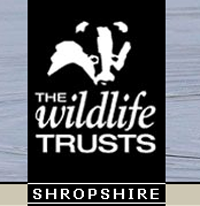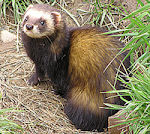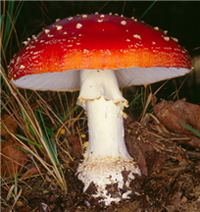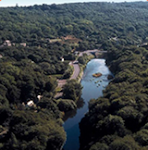Wednesday 30th July 2025, Betchcott Hill
Betchcott Hill is an area of upland acid grassland acquired by the Shropshire Wildlife Trust, not long ago, following a successful public fund raising appeal.
Meeting in a large lay-by a mile or so from the site we then shared cars for the final leg of the journey to the site which involves driving along the Portway.
At the start of the Portway we were treated on one of the best road surfaces in Shropshire.
How easy was this journey going to be?
All went well until we got to the edge of the site where the lane starts to climb the hill.
The tarmac ran out!
The last part of this short trip was completed on a gravelly unsurfaced track.
Fortunately, the track proved reasonably easy to negotiate as we climbed to the parking spot, just off the track at the top of the hill.
Here we were treated to a fabulous view, despite the murk, of Shropshire to the north and east, with The Wrekin centre stage.
Much to the relief of at least a couple of the group it was not raining (as last time they were here they got drenched).
There was not a car park in which to start our exploration but we started where the cars were parked!
We soon moved on.
Initially we were disappointed that the grass had been cut but there were plenty of areas where it had been left. We made for these, where we spread out and did our usual things.
Early finds that were photographed included:
A harvestman, Nemastoma bimaculatum.
A Meadow Ladybird, Rhyzobius litura.
A larva of a Drinker moth, Euthrix Potatoria.
And a weevil, Otiorhynchus singularis.
As a result of parking at the top of the hill everywhere we went was downhill…
And we know what that means …
All routes back to the cars were uphill.
Well, no good worrying about that yet. We continued to plunge downwards.
I was delighted to find that the long wet grass was alive with plenty of the green planthopper, Cicadella viridis. None were photographed so I have re-used this photograph from an earlier visit.
Walking through the long grass was far from easy, as the ground was quite uneven. When taking a step you were never quite sure where your foot would land … on a ridge, in a rut or, even, just where you would expect the ground to be.
Despite the difficulties we continued to plunge downwards, sweeping, beating, suction sampling whilst keeping our balance.
More finds:
A Red Marsh Ladybird, Coccidula rufa;
A longhorn beetle, Agapanthia villoviridescens;
And a tortoise beetle, Cassida flaveola, identified by its lack of distinguishing features!
Along the way a Field pansy, Viola arvensis, was spotted.
A patch of flatter ground was seen in the near distance. This seemed a good place to head for.
So we did.
But on the way we inspected some fence posts and noticed eggs on one of them.
These are, we believe, eggs of the Drinker moth.
A Red Patched Ladybird, Nephus redtenbacheri, was found.
Arriving in the flatter area we noticed that a group of trees had been removed. Their remains making a rather sad foreground to that wonderful view.
Why had the trees been removed?
Yes, they were conifers, but these provide habitats for invertebrates and birds.
Apparently, they posed a threat to ground nesting birds, such as Curlew. Predatory birds, for example Crows, could use the trees as a perch to search out suitable victims.
Lunch was taken in amongst the remains.
Lunch over, back to work.
Another havestman Mitopus morio was located.
Together with a couple of large spiders:
Araneus diadematus;
And Araneus quadratus.
Searching the grassland uncovered an Adonis' Ladybird, Adonia variegata, whose spots (apart from the one around its scutellum) are all positioned on the latter half of its elytra.
And a rove beetle, Ontholestes tessellaris.
We started to make our way back up the hill.
But before we got very far we noticed that a few had been delayed, examining the corpses of a fox and a sheep.
The rest of us sat down, relaxed and enjoyed a spell of warm sunshine while they carried out their investigations.
Blow flies are known to seek out carcasses and several were observed. Here are a couple that were photographed.
The first is probably Protophormia terraenovae.
 |
| Photograph: Liz Roberts |
Remembering how difficult it had been to walk down the hill, through the long grass, we took advantage of the situation by making our way up using the areas that had been cut.
We made it!
 |
| Photograph: Liz Roberts |
My thanks to Shropshire Wildlife Trust for permitting us to do what we enjoy doing and to the photographers for their excellent images.
On the journey home we stopped at St. Ruthen's church in Longden.
Why?
So that I could have the opportunity to see a Horseshoe ladybird, Clitostethus arcuatus. The churchyard was visited last year and a large number of these ladybirds were found on the Greater Celandine, so there was a good chance that they would still be present.
A quick tap of some Greater Celandine dislodged a few of the tiny beetles into a waiting tray. Here is one of them.
















































Fantastic, thank you. I was disappointed not to be able to join you so this more than makes for it!
ReplyDelete